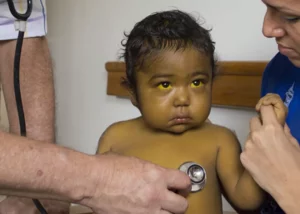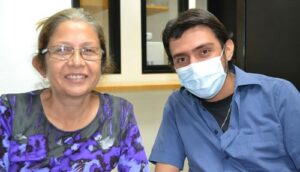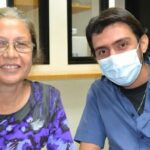Liver transplantation consists of replacing the patient’s own (damaged) liver with a healthy one, in most cases from a deceased donor. However, there are living donors when a partial donation is made to a specific patient.
The liver is responsible for assisting in the digestion of food and eliminating toxins, which is why when it fails irreversibly, a transplant is necessary. However, transplants will only happen in cases where other treatments have not worked in a positive way for the patient.
In fact, one of the most common conditions for which a transplant is necessary is cirrhosis. For children, the most common reason for needing a transplant is biliary atresia, a disease of the bile ducts.
Now, a person who was transplanted must follow a treatment regimen for the rest of his or her life so that the body does not reject the new liver.
What is the operation like? When it is a cadaveric donation, the organ is transported in a saline solution that preserves it for up to 8 hours. In this way, it will be possible to perform the necessary studies to determine the compatibility of the donor with the recipient.
While for a living donor, the new liver is removed from the donor and placed in the recipient, then connected to the blood vessels and biliary tract. This procedure can last up to 12 hours.
Post-operative
Since it is a transplant, the organism will reject the new organ and that is why the intake of immunosuppressants is prescribed for life, to avoid rejection. In addition, antibiotics and antimicrobials will be required to prevent infections.
Nutrition will also be an indispensable part of the recovery process, avoiding infections or other types of complications. All meals must be cooked under a very specific hygiene and cooking regime, thus eliminating any virus or bacteria.
As for the patient’s personal hygiene, he/she should wash his/her body, hands, hair and brush his/her teeth daily. After discharge, patients are advised to watch for any of the following signs:
- Fever
- Jaundice (yellowing of the skin and mucous membranes).
- Changes in the color of stools or urine
- Headache or tremor
Risks of transplantation
As in any surgical intervention, there are a series of possible risks or complications such as: bile duct complications, bleeding, mental confusion, even blood clots and convulsions.
It is for this reason that the studies prior to the transplant are indispensable for the treatment, as well as the approval for such intervention on the part of the specialists. Likewise, patients must know in detail all the procedures and indications to be followed during the treatment.
Throughout this procedure, psychological accompaniment by a professional is also advisable, as well as the support of family and loved ones.














